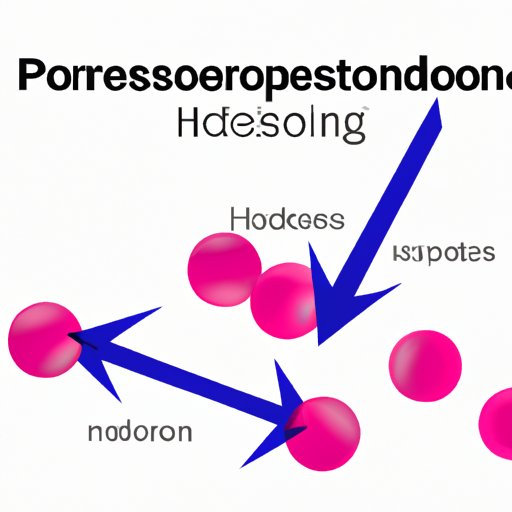
Introduction
Prednisone is a prescription medication commonly used to treat various inflammatory conditions and diseases. While the drug can offer many benefits, it can also cause various side effects, including excessive sweating. Excess sweating can be uncomfortable and embarrassing, and it can impact an individual’s daily activities and overall quality of life. This article aims to explore the relationship between prednisone and sweating, as well as offering tips and solutions for managing this unpleasant side effect.
Understanding Prednisone and Its Effects on the Body
Prednisone is a steroid medication that belongs to a class of drugs called corticosteroids. It works by reducing inflammation and suppressing the immune system. Doctors may prescribe prednisone for various conditions, including arthritis, allergies, asthma, and skin disorders. While the medication can be helpful for treating these conditions, it can also have a range of side effects, including excessive sweating.
When a person takes prednisone, it affects the body’s hypothalamic-pituitary-adrenal (HPA) axis. This axis controls the body’s natural hormone levels, including cortisol, which helps regulate metabolism and immune function. When taking prednisone, it can disrupt the normal hormonal balance in the body, leading to various side effects, including sweating.
Why Prednisone Causes Excessive Perspiration
Prednisone-induced sweating is due to the medication’s effects on the body’s natural hormone levels. When taking prednisone, it can cause an increase in the hormone cortisol, which, in turn, can affect the function of sweat glands. Cortisol is also known to impact the body’s temperature regulation system, making it more challenging to regulate body temperature and causing an individual to sweat excessively.
How Prednisone-Induced Sweating Can Impact Your Life
Excessive sweating can be more than just a nuisance for many individuals. It can cause embarrassment, anxiety, and discomfort, particularly in social settings or during physical activities. Sweating can also impact an individual’s quality of life, making it challenging to participate in daily activities or work-related tasks. Additionally, excessive sweating can also cause physical symptoms, such as skin irritation, rashes, and foul odors.
Managing Prednisone-Induced Sweating
While excessive sweating can be challenging to deal with, there are several ways individuals can manage this side effect. Below are some tips for managing prednisone-induced sweating:
- Stay cool: Wear light clothing, use fans or air conditioning, and avoid hot or humid environments.
- Maintain good hygiene: Shower frequently and use antiperspirants or deodorants regularly.
- Stay hydrated: Drink plenty of water and avoid beverages that can dehydrate you, such as caffeine and alcohol.
- Use absorbent materials: Wear socks and clothing made of moisture-wicking materials to help absorb excess sweat.
- Speak with your doctor: Talk to your doctor about potential medication changes or treatment options to manage the sweating.
Finding Relief from Prednisone-Induced Sweating
In addition to the tips mentioned above, several treatments can help manage excessive sweating caused by prednisone:
- Prescription strength antiperspirants: These contain a higher concentration of active ingredients than over-the-counter antiperspirants.
- Medications: Doctors may prescribe medications to help reduce sweating, such as glycopyrrolate or clonidine.
- Botox injections: Botox can be injected into the skin, which blocks the nerve signals responsible for excessive sweating.
- Iontophoresis: This involves using a medical device to apply a low-level electric current to the skin, which can reduce sweating in the treated area.
Coping with Sweat Side Effects of Prednisone
Aside from the treatments mentioned above, the following strategies can help individuals cope with the unwanted sweat side effects of prednisone:
- Stay positive: Keeping a positive mindset can help manage feelings of anxiety or embarrassment caused by sweating.
- Seek support: Talk to friends or loved ones about how you’re feeling. Sharing your experience can help lessen feelings of isolation or embarrassment.
- Focus on self-care: Practicing good self-care, such as getting enough rest, eating a healthy diet, and exercising regularly, can help reduce stress levels and improve overall health.
Conclusion
Prednisone is a medication that can offer many benefits, but it can also cause various side effects, including excessive sweating. While sweating can be uncomfortable and inconvenient, various treatments and coping strategies can help manage this side effect. It’s essential to speak with your doctor about any concerns you may have regarding prednisone-induced sweating and to find a treatment plan that works best for you.




